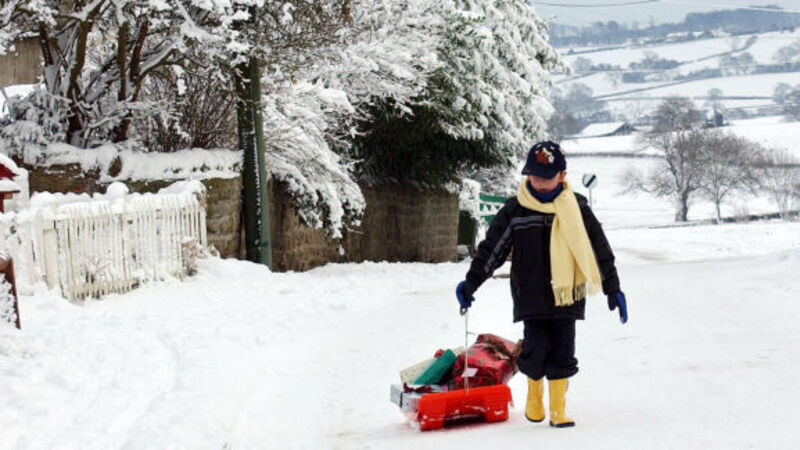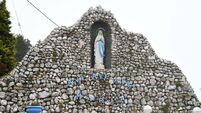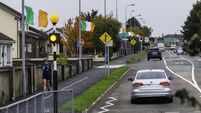Dreaming of a white Christmas? Well, here's the facts

Like the crooner Bing Crosby, everyone seems to be dreaming of a white Christmas and they’re usually disappointed.
The statistical likelihood of snow at Dublin Airport, for instance, is once every six years, as snow fell on Christmas day 12 times in the last 71 years, according to Aidan Murphy, of Met Eireann, who has studied snowfall in Ireland.
Weather forecasters have warned of plenty of cold and possible snow this winter, any time from now until March, but it seems unlikely that Christmas Day will be a white one.
White Christmas unlikely this year, says Met Éireann
We should not be too surprised by that as many Irish winters are completely free from major snow storms, which probably explains the chaos and panic that ensues whenever we get a half decent amount.
There was snow, however, on Christmas day in 1961, ’62, ’64, ’66, ’70, ’80, ’84, ’90, ’93, ’95, ’98, ’99, 2000, 2001, 2004, 2009 and 2010.
Here's a reminder of that snowy festive period in 2010.
So what actually constitures a white Christmas?
For many, a white Christmas means a complete covering of snow on the ground. The definition accepted by bookmakers, however, is for a single snow flake to be observed falling during the entire 24 hours.
One of our favourite past times - especially as we get older - remains sitting around firesides recalling severe winters.
I’ve often heard stories of 1947 when a persistent cold spell gripped all parts of the country from late January to mid-March. People suffered hardship because there was also a disastrous harvest in 1946 and war-time rationing was extended.
Occasionally, this newspaper publishes photographs of people skating on frozen water, such as in The Lough, in Cork, from days when winters were far more severe than they are now. After all, when you see people mowing their lawns in December, temperatures must have risen considerably.
There was another harsh winter in 1962/’63, with the highest ever depth of snow recorded at Casement Aerodrome, 45cm, on New Year’s Eve. While there was more snow, it was not as cold as ’47.
We remember 1962/’63 winter well, mainly because the local national school closed during January amid hopes the snow would last for much longer! In sheltered corners of fields, heaps of snow didn’t melt until April.
Aidan Murphy explains that, in winter, snow often occurs when two different air masses collide, the cold continental air from the north or east meets the relatively mild moist sea air from the south or west.
The number of days with snow cover tends to increase northwards through the Midlands corresponding to the decrease in winter air temperatures, he says.
Sea temperatures are warmer than land which often leads to rain near coasts, but snow a few miles inland. Rain showers may fall as snow on higher ground.














